- VMware
- VMware vCenter Server (VCSA), VMware vSphere
- 29 March 2024 at 13:39 UTC
-

- 1/2
From the VMware vCenter Server (VCSA) web interface, you can virtualize machines on Windows, Windows Server, but also on Linux.
The main difference lies in the installation of VMware Tools which is a little special, because it depends on the Linux distributions and their versions.
However, you will see that there are 2 techniques of which at least 1 is always compatible with your favorite Linux distribution.
- Check compatibility of a guest operating system (Linux)
- Store the Linux guest OS iso file in a datastore
- Create a Linux virtual machine
- Start your Linux virtual machine
- Install VMware Tools on Linux
- Files making up the Linux virtual machine
1. Check compatibility of a guest operating system (Linux)
In our case, we want to install the latest version of Debian supported by our version of VMware ESXi.
Although this may work in most cases, if you have access to VMware support, you should make sure to only install guest operating systems whose version is supported by your version of VMware ESXi.
To do this, go to the VMware Compatibility Matrix and select "Guest OS" at the top.
Then select:
- OS Family Name: the guest operating system you want to install. In our case: Debian 10.
- Product Release Version: the version of your VMware ESXi hypervisor. In our case: ESXi 6.7 U3.
As you can see from the VMware Compatibility Matrix, this is compatible and officially supported by VMware.
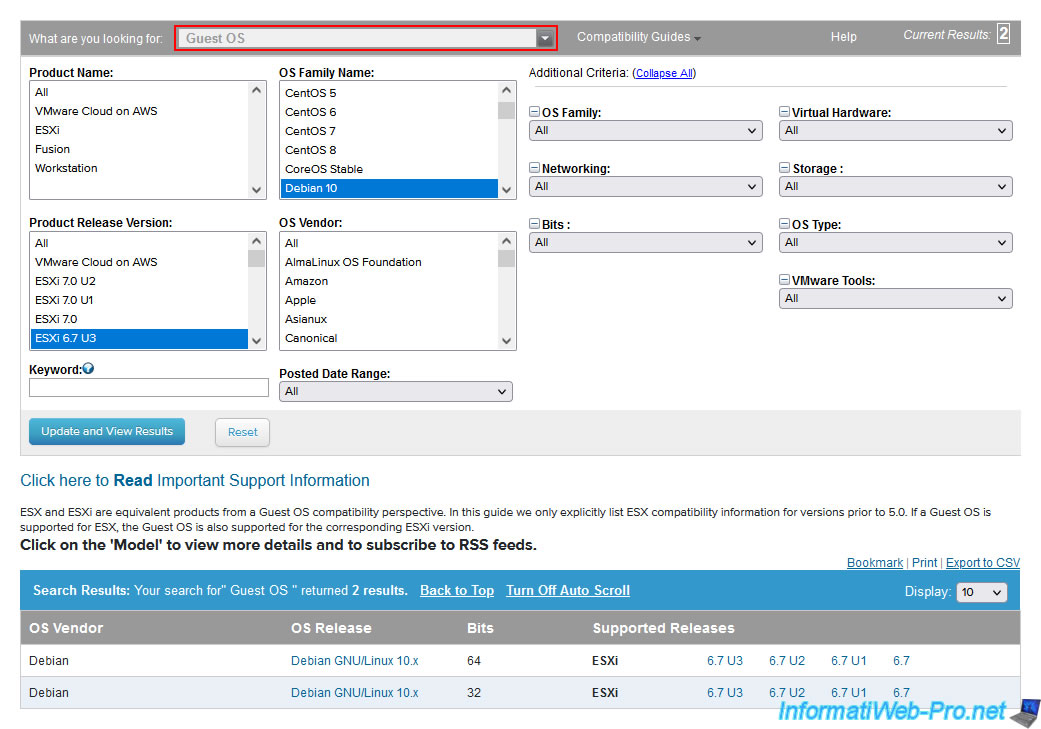
2. Store the Linux guest OS iso file in a datastore
Before creating your virtual machine, the simplest thing is to store the ISO file of the desired guest operating system (Linux distribution) in a datastore of your VMware ESXi hypervisor.
To do this, go to the 3rd tab (Storage), select a datastore corresponding to the VMware ESXi host where you want to create your virtual machine and click on "Upload Files".
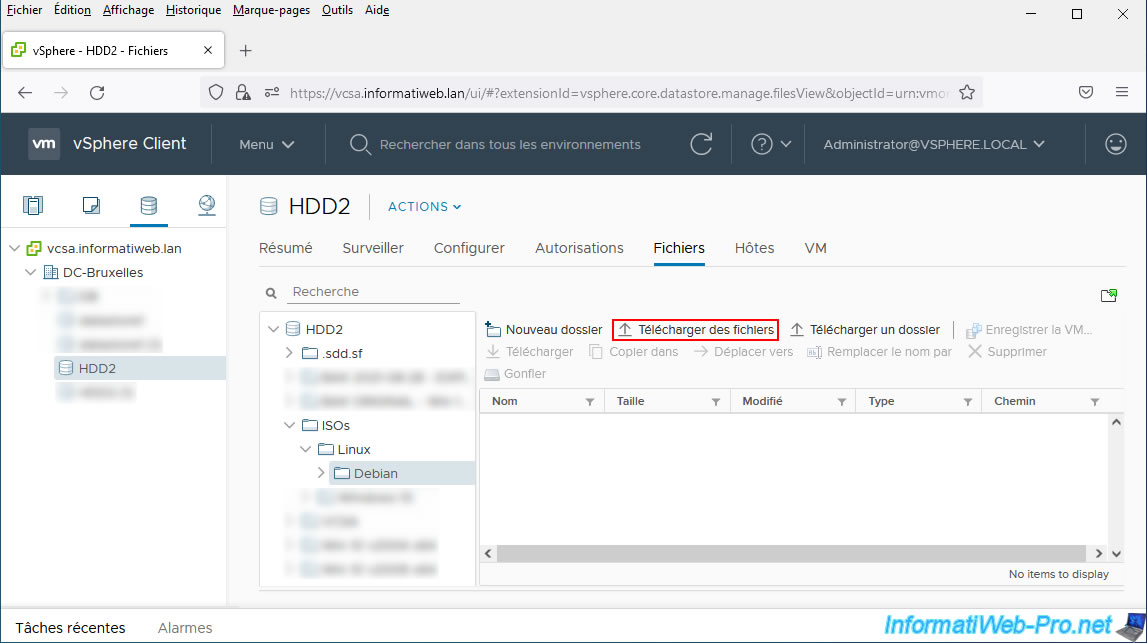
Select the guest operating system ISO file to send from your PC to your VMware ESXi hypervisor datastore and click: Open.
In our case: debian-10.9.0-amd64-netinst.iso.
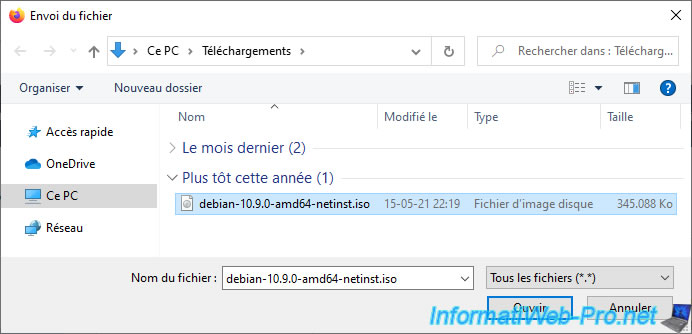
The progress of sending the desired ISO file appears at the bottom of the page.
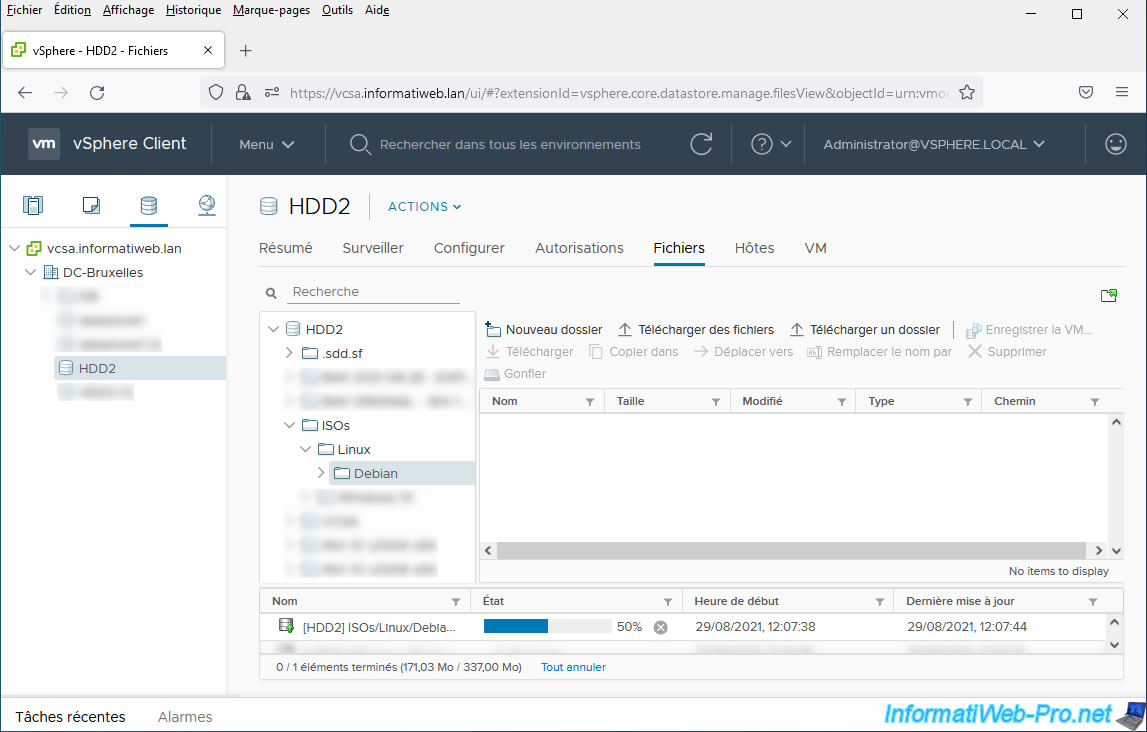
Once the desired ISO file has been sent, it will appear in your datastore.
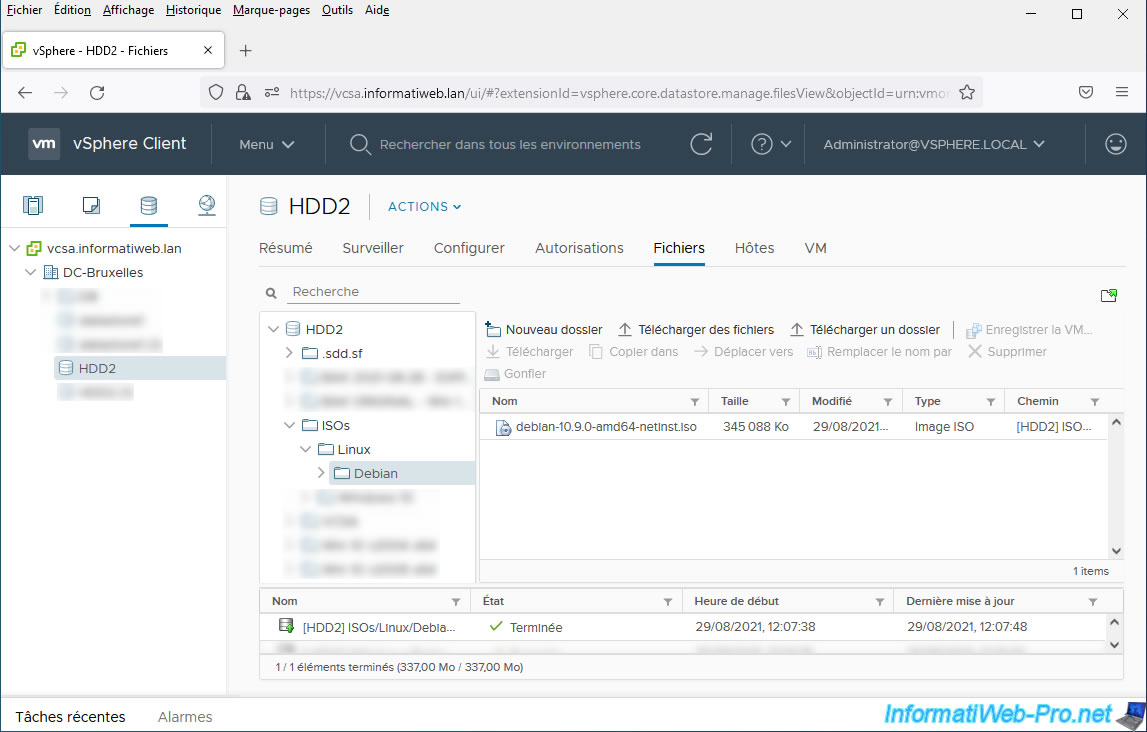
3. Create a Linux virtual machine
In the 2nd tab (VMs and Templates), right-click on the location (datacenter or folder) where you want to create your new Linux virtual machine and click: New Virtual Machine.

In the "New Virtual Machine" wizard that appears, select "Create a new virtual machine" and click Next.

Provide a name for your new virtual machine and select a location for it (if you haven't already).
Note that the location selected by default is the one where you right-clicked "New Virtual Machine".

Select which VMware ESXi hypervisor this virtual machine will run.
It is therefore its resources (processor and RAM) which will be used to operate your virtual machine.

Select the datastore where you want to store this virtual machine.
In our case, on our 1TB hard drive.

Select the compatibility level of your virtual machine.
By default, the version of the virtual hardware used will be the same as the version of your VMware ESXi hypervisor.

For the guest operating system (guest OS), you will need to select:
- Guest OS Family: the type of guest operating system you want to install.
In this case: Linux. - Guest OS Version: the version of this guest operating system. For Linux, you will therefore have to choose the Linux distribution / version thereof desired.
In our case: Debian GNU/Linux 10 (64 bits).

Then click: Next.

For configuring virtual hardware, you can adapt the desired resources:
- number of processor cores
- random access memory (RAM)
- virtual hard disk size
- and more
The most important if you want to prevent your virtual machine from taking up too much space too quickly and to use dynamic provisioning for its virtual hard disk.

For the virtual CD/DVD drive, select "Datastore ISO File".

Select the desired guest operating system (Linux distribution) ISO file previously stored in your VMware ESXi hypervisor datastore, and click OK.

Next, deploy this "New CD/DVD drive" node and check the "Connect At Power On" box so that the selected ISO file is automatically inserted into the virtual CD/DVD drive of this VM when it boots.

A summary of your virtual machine configuration is displayed.
Click on: Finish.

Share this tutorial
To see also
-

VMware 12/30/2022
VMware ESXi 6.7 - Install VMware Tools on Win Server in Core mode
-

VMware 9/28/2022
VMware ESXi 6.7 - Join the hypervisor to an Active Directory domain
-

VMware 9/2/2022
VMware ESXi 7.0 / 6.7 - Manually transfer a VM to another VMware ESXi host
-

VMware 12/13/2024
VMware vSphere 6.7 - Create a vApp


You must be logged in to post a comment